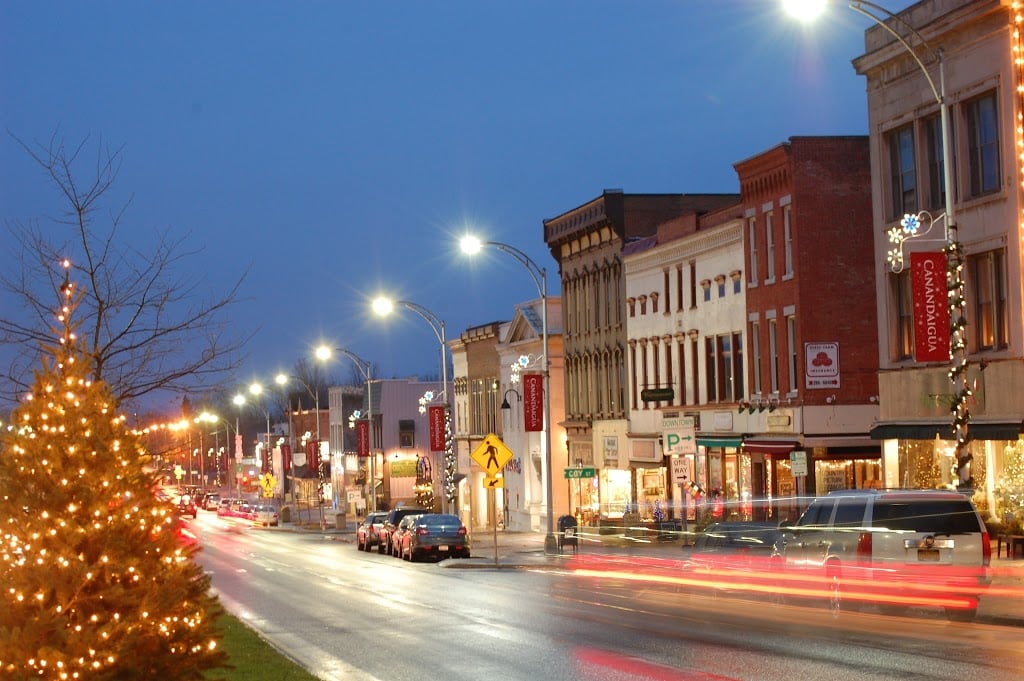City officials and state representatives kicked off the public planning process for Canandaigua’s $10 million Downtown Revitalization Initiative (DRI) award with an informational session on May 22, outlining the application process and funding criteria for potential projects.
Held at City Hall, the session marked the formal launch of the “open call” phase, allowing public, nonprofit, and private entities to submit project proposals for consideration. All projects must fall within the established DRI boundary and support the goals of downtown revitalization.
“This is Governor Kathy Hochul’s program—it’s focused on generating prosperity and vitality in downtowns across New York State,” said Mark Reed, a consultant leading the local planning effort.
All projects require new application, even previously submitted ideas

James DePaulo, the project manager and planner, told attendees that all potential project sponsors must fill out a detailed application form—even if their project was previously included in the city’s initial DRI submission.
“There’s no guarantee one way or another of inclusion in the final slate,” DePaulo said. “Everyone needs to submit a DRI application form. All projects will be evaluated equally by the Local Planning Committee.”
He also emphasized the importance of supplemental materials such as cost estimates, architectural drawings, and letters of support. “Err on the side of providing more information,” he advised.
The application deadline is July 11, 2025.
Four types of eligible projects defined
Officials explained that eligible DRI proposals fall into four broad categories:
- Public improvement projects – Streetscape upgrades, parks, trail improvements, and public art.
- New construction or rehabilitation of downtown buildings – Often to create mixed-use or residential spaces.
- Small Project Grant Fund – A city-managed pool of up to $600,000 to support smaller-scale upgrades such as facades or interior renovations.
- Branding and marketing – Including wayfinding signage and tourism promotion.
Projects focused on planning, operations, maintenance, training, or property acquisition are not eligible for DRI funding.
Local Planning Committee will evaluate projects over eight-month timeline
The Local Planning Committee (LPC), made up of community leaders and stakeholders, will work with consultants to evaluate project proposals over the next eight months. The final product will be a Strategic Investment Plan, which will recommend up to $15 million worth of projects—though only $10 million will ultimately be funded by the state.
“Part of the idea is to build in some flexibility,” DePaulo said, explaining that if a recommended project becomes unviable, alternate options will be available to maintain the full award.
The state is expected to announce funding decisions in the first quarter of 2026. All projects will be awarded as reimbursement-based grants, meaning sponsors must front costs and submit proof of expenses for reimbursement.
Consultants and city to provide ongoing support
Reed and DePaulo encouraged potential applicants to take advantage of office hours, one-on-one consultations, and follow-up sessions. “You are not alone,” Reed said. “We are here to help you through the process and help make your project more competitive.”
A separate, simpler application is available for those interested in the Small Project Grant Fund, which supports projects typically under $100,000. A 25% match is required.
Officials clarified that nonprofits are eligible to apply, but still must demonstrate a funding match. “We will confirm the details,” DePaulo told one attendee who represented a local arts group seeking public art funding.
Community input also being collected for downtown vision
Attendees were invited to contribute to panel boards that gather public input about downtown Canandaigua’s strengths, challenges, and priorities. These boards will inform a larger visioning and assessment process that supports project selection.
“We want to understand the logical basis for DRI projects,” DePaulo said. “That includes market trends, historic character, landscape needs, and more.”
The final Strategic Investment Plan will include not just recommended projects but also a “community roadmap” of good ideas that may not be funded by the DRI but could be pursued through other means.

